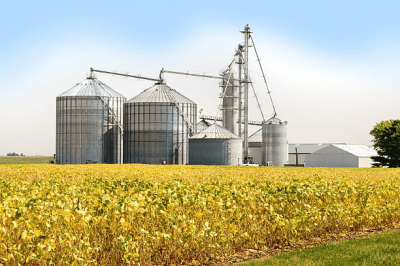The soy industry is facing potent competition, thanks to the traditional value of soy protein in generating famous food products like hamburgers. Are you aligned with us yet? If not, know that the industry is quite fragmented because of ever-growing regional competition, as the Transparency Research Committee reported. A few key global ventures in the soy product industry include Cargill, Inc., Archer Daniels Midland Company, Ruchi Soya Industries, Wilmar International, E. I. duPont de Nemours and Company, and The Scoular Company.
More so, these substantial players continue to benefit from the growing popularity of plant proteins and enhanced per-hectare growth. This is a result of proliferating advances in the field of agriculture. Talking about history, soy was consumed as a substitute to meet day-to-day protein requirements. Plus, the significant growth has shaped several opportunities in the large-scale commercial agriculture market because of the seamless introduction of such protein products. However, in 2005, the United States 36% and Brazil 15% were a couple of massive soy exporters.
Following their success led to the soy industry witnessing a considerable push in imports in the EU 22% and China 40% during the same year. Furthermore, even regional demand in Japan and Mexico accounted for approximately 6% of market imports. That said, the global soy market is expected to reach US7.7% billion by 2024. Earlier, experts evaluated the market at US4.8 billion in 2015 and are likely to expand at 5.5% CAGR. The expected figures will blow your mind if the statistics do not catch your attention.
Going by U.S. Soy, this industry is segregated into confectionery, bakery, functional foods, sauces and soups, animal food, vegetable broths, and personal care products. Along these, functional food products are anticipated to witness considerable growth. Soybean’s cost-efficient application and established nutritional value are prominent factors expected to attract growth. On the other hand, the soy market is bound to grow endlessly in Asia Pacific. As mentioned above, Asia Pacific is one of the key regions for the soy industry. This has allowed countries like India and China to open disposable income and new opportunities.
Soy Industry on the Verge of Dynamic Transformation
Did you know the soy market continues to see massive agricultural investments in numerous countries, with the US leading the charts in 2018? For those who’re unaware, the nation produced a staggering 108 million metric tons. Besides, the production growth is fuelled by the growing status of soy as the preferable product for consumers and manufacturers alike. This is because other protein goods have become the FAD for modern-day consumers as the rising demand for a sedentary lifestyle, healthy nutrition, and lifestyle diseases, such as obesity, are on a significant rise.
In the modern day and age, soy is the punch-drunk player in the crop world. The growing season indisposition and tariffs, such as water hemp, are inducing their toll. But still, soy products have multiple perks ingrained within them. They are not called the wonder crop for nothing. By accommodating their nitrogen, soy products are not weighed down by seeping retail fertilizer prices that corn tends to incur. In addition, soy has a niche-market potential since they have a close relationship with dieticians who like the legume for its health advantages.
Did you know soybeans offer a rotational break for corn that is encountering issues of its own, like resistance to rootworm control concerns? Such a measure depends on the potential to grow soy with a profitable mindset. Here you go with a few steps to help any manufacturer earn significant profits from soy products.
Choose varieties wisely.
Today, seed companies have a lot of sound products in the trade. How these perform hinges on certain field parameters. That is why experts advise farms to match their seed options to the management style and field specifics. Moreover, it might be tillage practices, soil types, or disease histories. Tracking such insight can allow dealers and farmers to tailor an ideal variety to the entire field.
Plant as early as you can.
Have you heard of the expression cleanliness right next to godliness? An expert, Shaun Casteel, paraphrases the quote by saying – timeliness is next to godliness. This indeed applies to soy planting. Given a field is correctly tiled, soy planting might happen even earlier. The more sunlight these plants obtain, the more photosynthesis they churn. This creates relatively more possible yields.
Snuff prior weeds.
Indeed, applying residual herbicide was quite challenging in various fields earlier. However, in a few cases, farmers have planted first and focused on terminating cover crops or weeds. Plus, this year tends to pose unique weed-management difficulties, provided every prevented plant acre in 2019. One such process to head these weeds is to snuff them before they begin. Remember, the backbone accommodating needs is preemergence herbicides.
Moreover, experts suggest that such programs are not budget-friendly. Manufacturers and their farmers have to get used to water hemp with a cost of $50/acre weed.
Harvest soy at minimum moisture rates.
The other year corn was still on the verge of maturing. This made producers harvest soy seeds earlier than their formative time. Such an action presented an excellent opportunity to harvest at a preferred 12% to 15% moisture instead of 10%.
What’s the verdict?
The biggest news for soy producers and companies is that the market is in growing demand regarding functional foods. The more the demand, the more opportunities. But, the production budgeting is anticipated to increase because of the increasing demand for soy products in nutritional food products. Ultimately, one must be cautious of any industry changes.








 The 2024 virtual Men’s Round Table will be held Q4, 2024, date TBD.
The 2024 virtual Men’s Round Table will be held Q4, 2024, date TBD.












